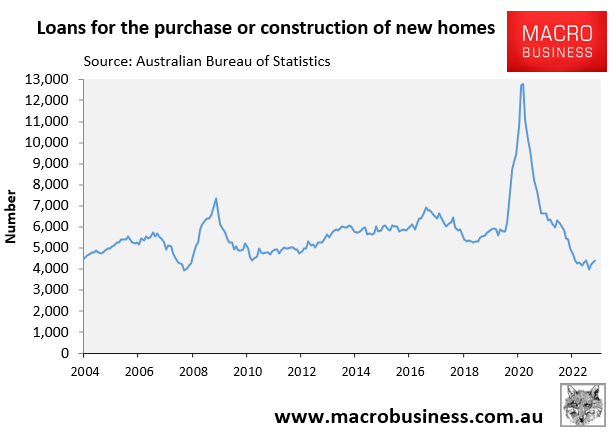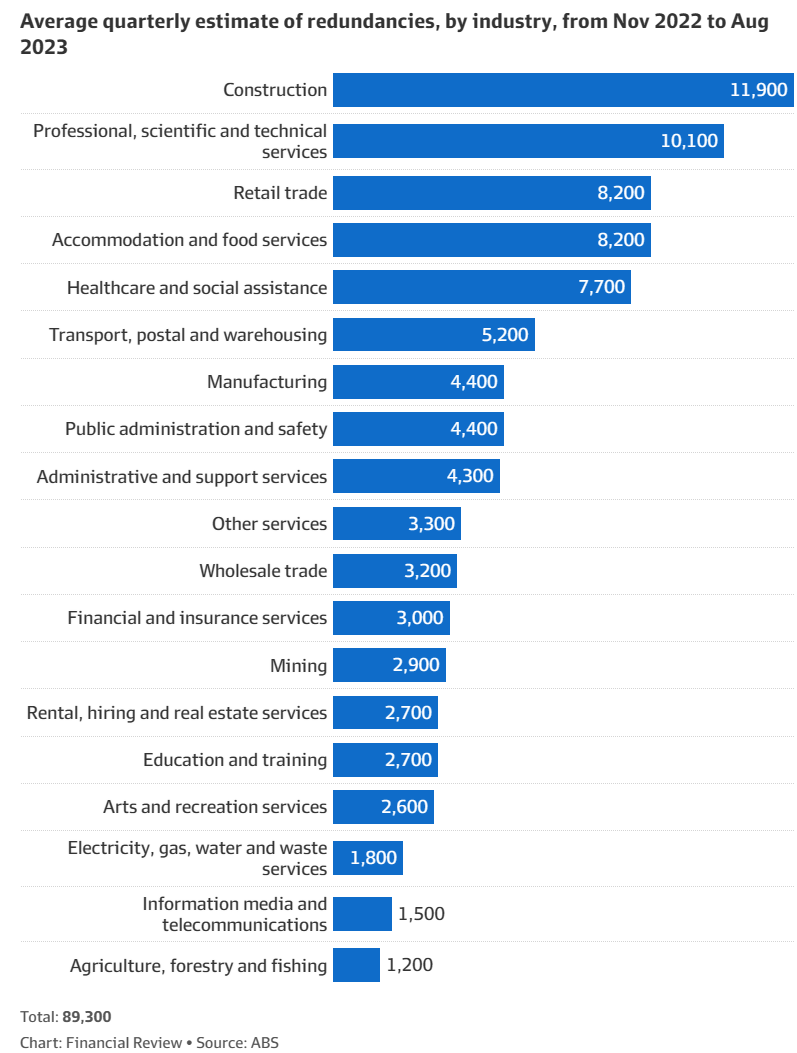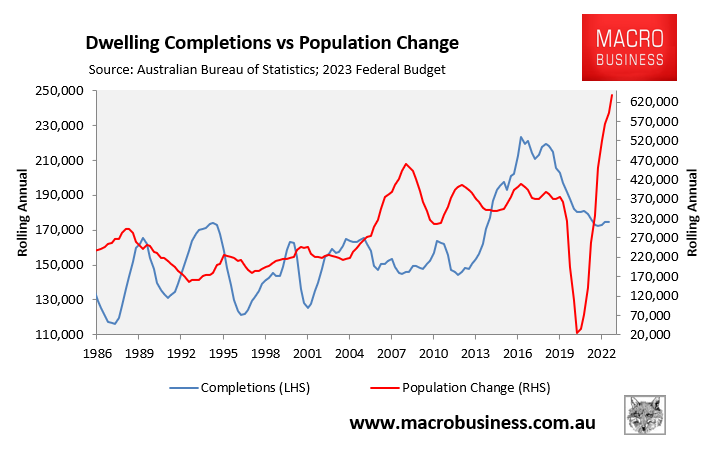The Housing Industry Association (HIA) released new homes sales data for November, which declined by 7.0% over the month and remained at a low level:

HIA Chief Economist Tim Reardon warned that “sales of new homes nationally have remained low throughout 2023 and this will see the volume of houses commencing construction continue to contract into 2024”.
“Nationally, new home sales across Australia fell by 7.0% in the month of November and remain at low volumes as rising interest rates continue to constrain house building”.
“This will see the volume of homes commencing construction continue to contract in 2024 resulting in the lowest number of new house commencements since 2012”, concluded Reardon.
The result follows a swathe of other forward-looking indicators pointing to falling dwelling construction next year.
The Australian Bureau of Statistics (ABS) this month released dwelling approvals data showing that only 164,200 homes were approved for construction in the year to October – the lowest level in a decade:

Loans for the purchase and construction of a new home are also tracking at historical lows:

Meanwhile, ABS data provided to The AFR showed that the construction industry led job redundancies in the year to August, driven the residential builders:

Finally, the number of construction industry insolvencies has ballooned to its highest level in more than a decade, with insolvency rates running at more than double other sectors:

All of which means the Albanese government’s pie-in-the-sky target of building 1.2 million homes has zero chance of being achieved.
The highest single year of dwelling completions in Australia was 223,000 in 2017. This occurred alongside lower interest rates, cheaper materials prices, and more abundant labour availability.

The polar opposite conditions are prevalent now.
This means that Australia’s housing shortages will continue to worsen as the Albanese government’s mass immigration policy swamps supply, driving rents further into the stratosphere, and forcing more Australians to live in group housing or to become homeless.
A housing disaster is unfolding before our very eyes.

